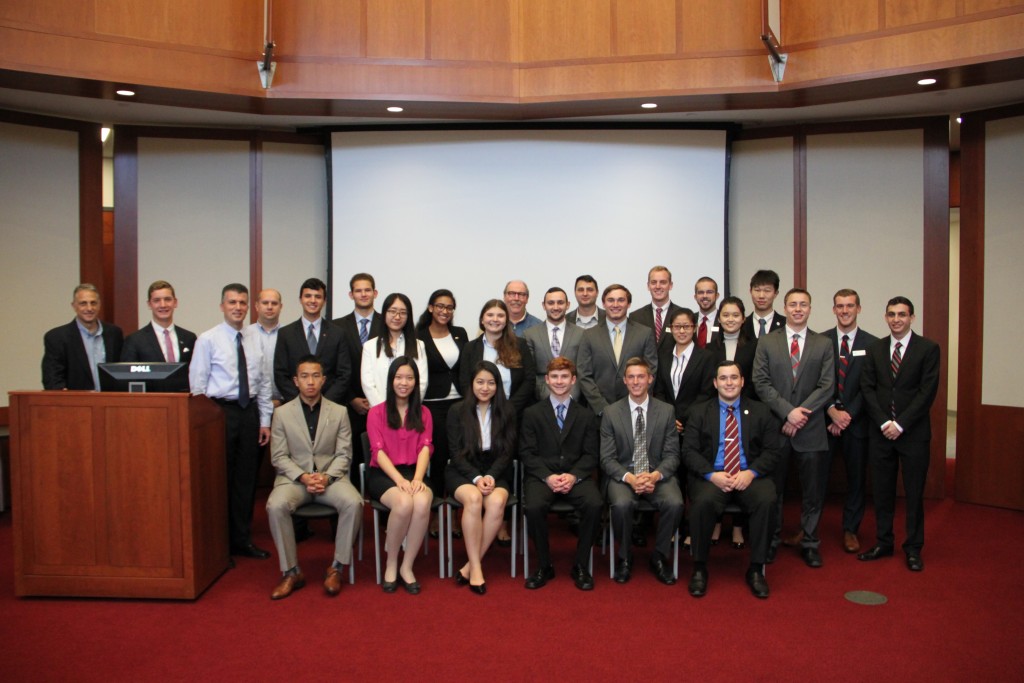Are Bitcoin and blockchain the same thing? No, they aren’t. However, they are closely related. When Bitcoin was released as open source code, blockchain was wrapped up together with it in the same solution. And since Bitcoin was the first application of blockchain, people often inadvertently used “Bitcoin” to mean blockchain. That’s how the misunderstanding started. Blockchain technology has since been extrapolated for use in other industries, but there is still some lingering confusion.
The Risk Institute’s 2017 Annual Conference: The Digital Revolution and Risk Evolution will feature Paul Brody, a blockchain expert from EY.
How are Bitcoin and blockchain different?
Bitcoin is a type of unregulated digital currency that was first created by Satoshi Nakamoto in 2008. Also known as a “cryptocurrency,” it was launched with the intention to bypass government currency controls and simplify online transactions by getting rid of third-party payment processing intermediaries. Of course, accomplishing this required more than just the money itself. There had to be a secure way to make transactions with the cryptocurrency.
Bitcoin transactions are stored and transferred using a distributed ledger on a peer-to-peer network that is open, public and anonymous. Blockchain is the underpinning technology that maintains the Bitcoin transaction ledger. Check out this infographic and watch the video below for an overview:
How does the Bitcoin blockchain work?
The Bitcoin blockchain in its simplest form is a database or ledger comprised of Bitcoin transaction records. However, because this database is distributed across a peer-to-peer network and is without a central authority, network participants must agree on the validity of transactions before they can be recorded. This agreement, which is known as “consensus,” is achieved through a process called “mining.”
After someone uses Bitcoins, miners engage in complex, resource-intense computational equations to verify the legitimacy of the transaction. Through mining, a “proof of work” that meets certain requirements is created. The proof of work is a piece of data that is costly and time-consuming to produce but can easily be verified by others. To be considered a valid transaction on the blockchain, an individual record must have a proof of work to show that consensus was achieved. By this design, transaction records cannot be tampered with or changed after they have been added to the blockchain.
How is blockchain for business different?
The blockchain that supports Bitcoin was developed specifically for the cryptocurrency. That’s one of the reasons it took a while for people to realize the technology could be adapted for use in other areas. The technology also had to be modified quite a bit to meet the rigorous standards that businesses require. There are three main characteristics that separate the Bitcoin blockchain from a blockchain designed for business.
Assets over cryptocurrency
There is an ongoing discussion about whether there is value in a token-free shared ledger, which is essentially a blockchain without cryptocurrency. I won’t weigh in on this debate, but I will say this: blockchain can be used for a much broader range of assets than just cryptocurrency. Tangible assets such as cars, real estate and food products, as well as intangible assets such as bonds, private equity and securities are all fair game. In one business use case, Everledger is using blockchain to track the provenance of luxury goods to minimize fraud, document tampering and double financing. Now, over one million diamonds are secured on blockchain.
Identity over anonymity
Bitcoin thrives due to anonymity. Anyone can look at the Bitcoin ledger and see every transaction that happened, but the account information is a meaningless sequence of numbers. On the other hand, businesses have KYC (know your customer) and AML (anti-money laundering) compliance requirements that require them to know exactly who they are dealing with. Participants in business networks require the polar opposite of anonymity: privacy. For example, in an asset custody system like the one being developed by Postal Savings Bank of China, multiple parties, including financial institutions, clients, asset custodians, asset managers, investment advisors and auditors are involved. They need to know who they are dealing with but one client or advisor doesn’t necessarily need to be able to see all transactions that have ever occurred (especially when those transactions relate to different clients).
Selective endorsement over proof of work
Consensus in a blockchain for business is not achieved through mining but through a process called “selective endorsement.” It is about being able to control exactly who verifies transactions, much in the same way that business happens today. If I transfer money to a third party, then my bank, the recipient’s bank and possibly a payments provider would verify the transaction. This is different from Bitcoin, where the whole network has to work to verify transactions.
Why will blockchain transform the global economy?
Similar to how the internet changed the world by providing greater access to information, blockchain is poised to change how people do business by offering trust. By design, anything recorded on a blockchain cannot be altered, and there are records of where each asset has been. So, while participants in a business network might not be able to trust each other, they can trust the blockchain. The benefits of blockchain for business are numerous, including reduced time (for finding information, settling disputes and verifying transactions), decreased costs (for overhead and intermediaries) and alleviated risk (of collusion, tampering and fraud).
A version of this article originally published on May 9, 2017 on Blockchain Unleashed: IBM Blockchain Blog.
Written By:
Matt Lucas
Global Blockchain Labs Enablement, CTO Europe Office, IBM Industry Platform








